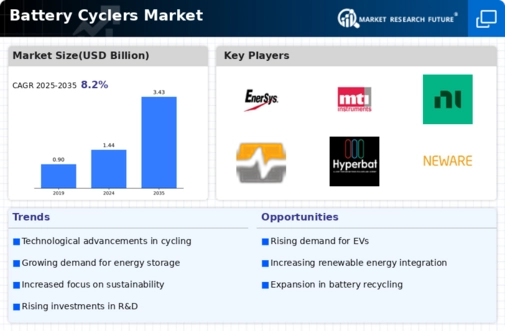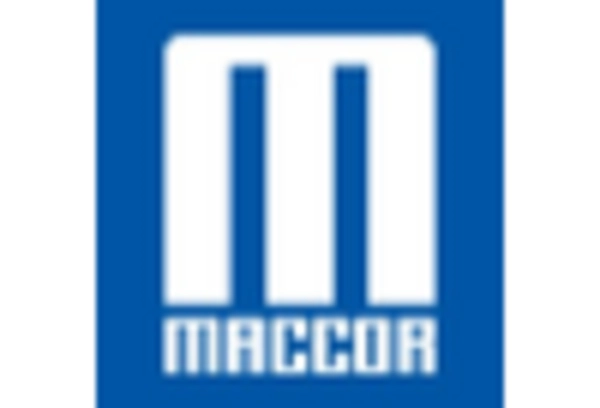Growing Renewable Energy Sector
The expansion of the renewable energy sector is significantly influencing the Battery Cyclers Market. As solar and wind energy installations proliferate, the need for efficient energy storage solutions becomes critical. Battery cyclers are integral to the development of energy storage systems, which are essential for balancing supply and demand in renewable energy applications. In 2025, the energy storage market is anticipated to exceed 200 gigawatt-hours, highlighting the increasing reliance on battery systems. This trend underscores the importance of battery cyclers in optimizing the performance and lifespan of storage batteries, thereby driving growth in the Battery Cyclers Market.
Advancements in Battery Technology
Technological innovations in battery chemistry and design are driving the Battery Cyclers Market forward. The development of lithium-sulfur and solid-state batteries, which promise higher energy densities and improved safety, requires sophisticated testing equipment. As manufacturers strive to enhance battery performance, the demand for precise cycling and testing solutions increases. In 2025, the market for advanced battery technologies is expected to reach several billion dollars, indicating a robust growth trajectory. Battery cyclers are essential for validating these new technologies, ensuring they meet performance standards and safety regulations, thus fostering the expansion of the Battery Cyclers Market.
Rising Demand for Electric Vehicles
The increasing adoption of electric vehicles (EVs) is a primary driver for the Battery Cyclers Market. As consumers and manufacturers shift towards sustainable transportation solutions, the need for efficient battery management systems becomes paramount. In 2025, the EV market is projected to grow significantly, with estimates suggesting that over 30 million units will be sold annually. This surge in demand necessitates advanced battery testing and cycling technologies to ensure optimal performance and longevity of EV batteries. Consequently, battery cyclers play a crucial role in the development and maintenance of these batteries, thereby propelling the growth of the Battery Cyclers Market.
Increased Focus on Battery Recycling
The rising emphasis on battery recycling is emerging as a significant driver for the Battery Cyclers Market. As environmental concerns regarding battery waste intensify, the need for effective recycling processes becomes crucial. Battery cyclers are essential in the recycling process, as they help assess the health and performance of used batteries, determining their viability for reuse or recycling. In 2025, the battery recycling market is projected to grow substantially, driven by both regulatory pressures and consumer awareness. This trend not only supports sustainability efforts but also enhances the demand for battery cyclers, thereby contributing to the overall growth of the Battery Cyclers Market.
Regulatory Support for Energy Storage Solutions
Government policies and regulations promoting energy storage solutions are acting as a catalyst for the Battery Cyclers Market. Many countries are implementing incentives and subsidies to encourage the adoption of energy storage technologies, which directly impacts the demand for battery cyclers. In 2025, regulatory frameworks are expected to become more favorable, with numerous initiatives aimed at enhancing energy efficiency and reducing carbon emissions. This supportive environment is likely to stimulate investments in battery testing and cycling technologies, further propelling the growth of the Battery Cyclers Market as manufacturers seek to comply with evolving standards.
















Leave a Comment